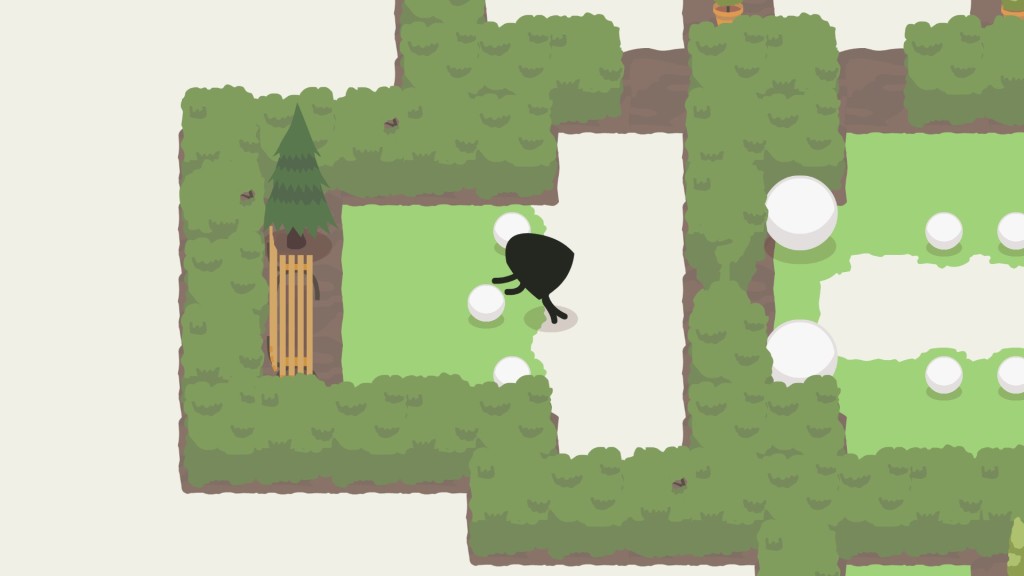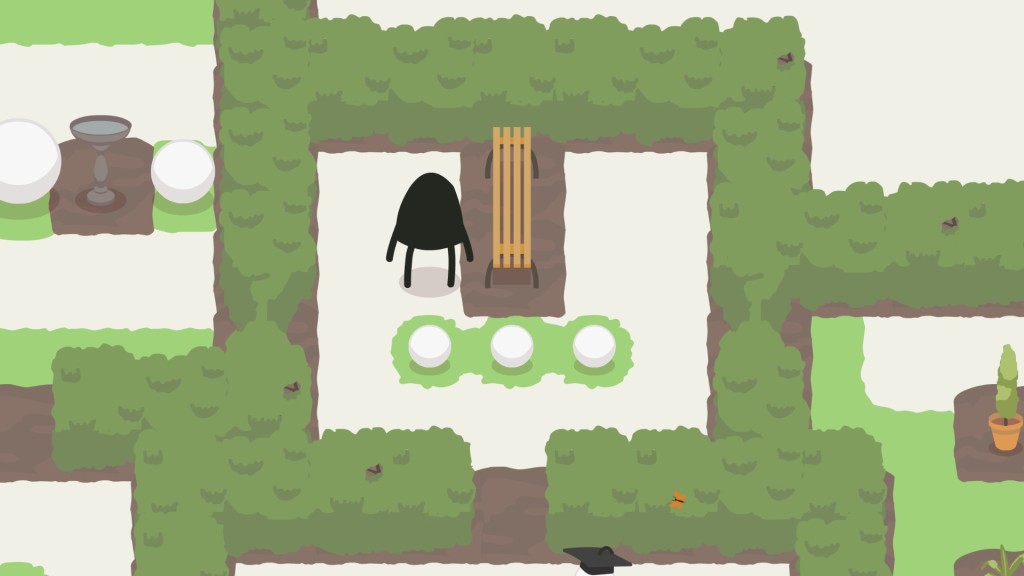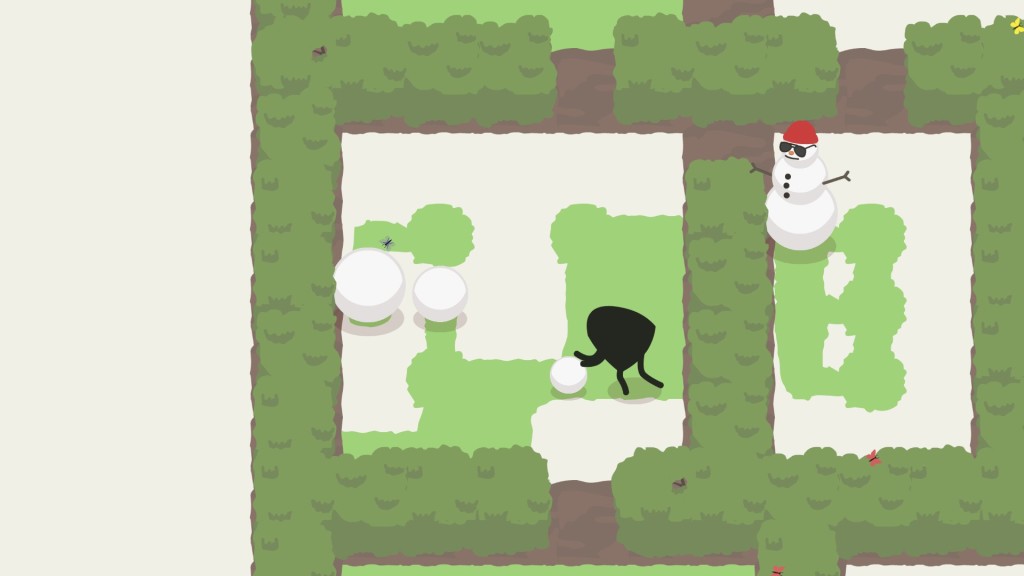
In A Good Snowman Is Hard To Build, you play as a monster with a singular focus: building snowmen. To do this, you will have to push three snowballs atop each other, with the large one on bottom, the middle one next and the smallest on top. Once all three snowballs are aligned in the correct way, the snowman is done and it is on to the next. The game does a good job of introducing its simple puzzle mechanic and then expanding on the ways that mechanic is used, and it absolutely oozes charm. It ends a bit too quickly, however, and may leave you feeling a bit empty and wanting more from the experience overall.
The main puzzle mechanic involves pushing snowballs in the four cardinal directions around obstacles and over grass or snow. If the snowball rolls over snow, it gathers that snow up (leaving the ground on that tile bare) and increases in size (small to medium to large). Once a snowball becomes large, however, it will just roll around the ground, absorbing snow but not actually increasing in size beyond that point. After getting together three snowballs of the three appropriate sizes, it’s just a matter of rolling them together into one stack. This is rarely as easy at it seems, though, and there are a number of puzzles that take a good deal of brainpower to make it through.
A Good Snowman Is Hard To Build offers very little else in terms of its gameplay beyond this basic puzzle mechanic, though it is presented it in a very nice package. The game has a cute cartoonish aesthetic, relaxing music and intuitive controls. It easily allows for moves to be “taken back” if a mistake is made, and with a simple push of a button, the entire level can be reset at once, allowing for multiple tries at success. The various puzzles all comprise rooms in one big hedge maze, and all of the constructed snowmen are named, so that when things start to get difficult, you have a focus for your frustration. “Dang it, Paul… why can’t I build you?”

The most common failure condition is in not being able to push all of the snowballs together before they become too big. Since rolling over snow increases their size, you have to be judicious about pathing so as to not have too far a distance to roll from your initial start to the desired outcome. If you do roll too far, the ball becomes too big and you start over, and if you get locked against a wall, you might have to start over, too, since only pushing is allowed. The most common strategy becomes using a big-sized snowball to clear paths for the smaller ones to move without increasing in size, but this only goes so far and you quickly run up against situations where building the snowman initially seems impossible.
The game only boasts a handful of levels and the introductory ones can be completed very quickly, but the later ones could take a considerable amount of time depending on how quickly you can see a solution. All told, the less than 30 puzzles could be completed in under a half hour by someone who knew exactly what they were doing, but for a first attempt I’d imagine most people will take between two and three hours to complete the game (the last puzzle alone had me stumped for nearly 20 minutes).
This isn’t where the game necessarily ends though, depending on how much you enjoy the concept. There is a second “bonus” mode that can be accessed after completing the main puzzles, and this mode is incredibly hard. The game gives no indication of the existence of this mode (beyond a few missed achievements), and once you find it you will get no help in determining the mechanics of this new playground. This can be frustrating, as initially it seems there is no way to complete the challenges that this mode presents. Play around long enough, though, and you will see all of the intricacies of these bonus levels, and once you do, the magnitude of their difficulty becomes immediately apparent. If you enjoy the game enough to pursue this mode, you’ll find a significant number of hours more playtime in trying to overcome these later bonus puzzles, but if you aren’t completely invested, the sheer difficulty of what you need to do will likely drive you away.

While I really like the core mechanics of A Good Snowman Is Hard To Build, I think giving it a recommendation is a tough sell. The core concept is interesting and the puzzles are fun while they last, but the game finishes like a flash in the pan and seems to be over before it starts. I would have liked to have seen the main mode developed further and the ideas of the second mode presented in a more accessible way, as the difficulty ramp up between the two modes is so high that it actually serves as a deterrent to attempting it once its intricacies have been discovered. If you’re looking for a puzzle game with simple mechanics and meaty depth you’ll find that here, just don’t expect the experience to last much longer than the snow in summer.
Pros: Unique and interesting puzzle mechanic, beautifully simple aesthetic
Cons: Main game lacking in content, obtuse and inaccessible secondary game mode



















